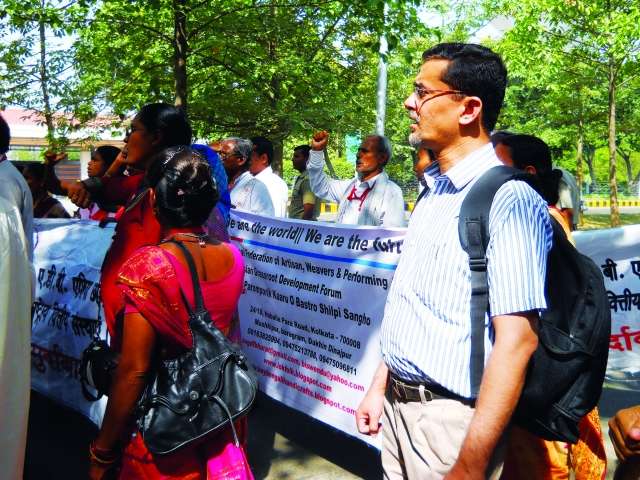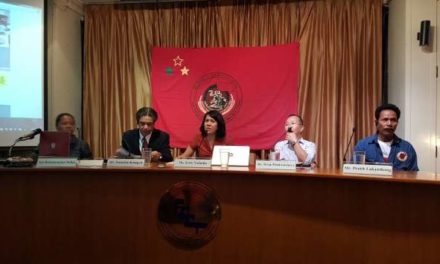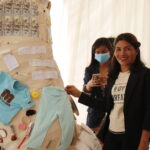By Shalmali Guttal
In the name of poverty reduction and inclusive development, the ADB continues to promote the transfer of natural wealth and public assets to private companies across the Asia and Pacific region. Through loans, co-financing and Technical Assistance (TA), the ADB creates and demands conditions for widespread privatization in virtually every sector, from transportation, energy and urban development to agriculture, water and finance. ADB-supported infrastructure projects, Special Economic Zones (SEZs), information technology parks and agriculture modernization are resulting in widespread dispossession of workers, urban and rural poor, and agricultural, coastal and indigenous communities from their resources and livelihoods, as well as in the capture of lands, forests, water and minerals by private corporations.
In his first address to the ADB Board of Governors on May 4, 2013, the new ADB President Takehiko Nakao made clear that the ADB will retain its ideology of rapid economic growth as the most effective path to development, free markets as the most efficient allocators of resources and opportunities, and the private sector as the best option for delivering goods and services. He emphasized the need for an enabling environment for the private sector to grow, innovate and provide jobs, conducive regulatory systems, broad-based financial systems, and infrastructure development. Mr. Nakao also said, “All of these must be underpinned by good governance. The rule of law and its just implementation, accountability, and protection of property rights are essential in building a better a climate for investment and innovation.”[1]
Although the ADB expresses support for job creation, education and accessible, cost-effective health services, private sector development is at the heart of all ADB operations. The private sector is aggressively pushed in all ADB supported projects through public-private partnerships (PPPs), private capital equity investments, loan and risk guarantees, co-financing, etc. Governments are advised to shift from “owner-producer” to “facilitator-regulator” of goods and services, and create an “enabling environment for private sector participation” through policy reforms and regulatory changes. The ADB’s Strategy 2020 document states:
To spur market-led growth, ADB will invest in infrastructure and advise governments on the basics of a business-friendly environment, including reliable rules, regulations, and policies that do not disadvantage private sector enterprise. ADB’s tools to catalyze change through greater private investments in DMCs will include direct financing, credit enhancements, risk mitigation guarantees, and innovative new financial instruments… ADB will promote public–private partnerships in all of its core operational areas, gaining experience first in MICs, and then expanding these efforts to all DMCs.[2]
Mired in its growth strategy
Whether it’s a Developing Member Country (DMC) or a Middle Income Country (MICs), the ADB ‘s development strategy contains the same three elements: inclusive growth, environmentally sustainable growth and regional integration (i.e., trade and investment) as an avenue to spur growth, especially in countries that are rich in natural resources. Although the ADB recognizes that rapid economic growth has resulted in environmental damage and resource depletion, it continues to promote growth driven projects and programs that perpetuate environmental destruction and alienation of local people from productive resources. Key among these are, infrastructure projects in transportation, energy, and information and communication technology, as well as policies, regulation and financial systems to attract private capital into infrastructure projects. The institution believes that an infrastructure deficit has constrained market-led growth and access to social services, undermined agricultural productivity and job creation, and deprived many countries of private investment. Thus, the strategy document also states that:
Under Strategy 2020, ADB’s infrastructure operations will emphasize public–private partnerships and private sector engagement. ADB will promote a larger role for the private sector in financing infrastructure, either as a project sponsor or an institutional bond or equity investor. The latter role carries great promise for augmenting the supply of capital for infrastructure in developing the region. [3]
The ADB further states that its core strategy of infrastructure-led growth to reduce poverty continues to be relevant for India. In order to meet the huge financial requirements of its ambitious physical infrastructure plans, the Indian Government is increasingly relying on PPPs. The ADB is supporting the mainstreaming of PPPs and PPP Cells are already operating across 16 states and 7 central line ministries in India.[4] Through its private sector window, ADB has supported the development of India’s financial markets, primarily through capital markets, investment funds, banking, and housing finance. Over the years, ADB also approved several investments in private equity funds that have invested in an array of private companies, as well as in infrastructure projects.[5]
The ADB’s lending program in India for the period 2013–2015 will average around $2 billion annually in terms of sovereign operations. The funds will be allocated across four core infrastructure sectors— transport, energy, urban, and agriculture and natural resources— and two crosscutting sectors,finance and skills development. ADB’s private sector operations will have continuing involvement in all these areas. The country partnership strategy (CPS) 2013–2017 currently being formulated will include support for the development of high-priority economic corridors, create markets for infrastructure finance, and promote regional cooperationand integration through the South Asia Sub regional Economic Cooperation (SASEC) platform.[6]
The Greater Mekong Subregion Economic Cooperation Program (GMS) is the ADB’s flagship regional integration programme. Initiated in 1992, the GMS aims to transform the rich human and natural endowments of the Mekong region into a region-wide free trade and investment area, fueled and led by private sector growth. Majority of the capital investment in the GMS has been in the areas of transportation (road, railways, air and waterways), energy, telecommunications, tourism, trade, agriculture and private sector investment. Since 1992, infrastructure projects worth around US$10 billion have either been completed or are being implemented. Among these are the upgrading of the Phnom Penh (Cambodia)-Ho Chi Minh City (Viet Nam) highway and the East-West Economic Corridor that will eventually extend from the Andaman Sea to Da Nang.[7] GMS projects are developed almost entirely by ADB staff and private consultants and firms and financing comes from the ADB, bilateral donors and private capital.
Economic Corridors
The GMS strategic framework adopted at the 4th GMS Summit in Nay Pyi Taw, Myanmar in December 2011 prioritizes the development of economic corridors, which the ADB claims, “provides the spatial and thematic focus to the program going forward” by fostering multi-sector investments.[8] Economic corridors are pockets of high infrastructure development to attract private investment and in the GMS, framework, to facilitate the establishment of a free trade and investment region. Economic corridor development is accompanied by a push for host governments to put in place policies and regulations to enable Special Economic Zones (SEZs), industrial parks, agricultural processing, manufacturing, tourism and other forms of private investment.
The economic corridor strategy is also being supported in India. In the Indian state of Chhattisgarh, the ADB will provide US$ 430,500,000 to the Chhattisgarh Public Works Department to support six transportation corridors and road networks that will pass through forest and indigenous areas, near rich coal and mineral deposits. One of the most destructive projects that the ADB is involved in is the Delhi-Mumbai Industrial Corridor (DMIC), a mega infrastructure project that runs from Delhi to Mumbai through six states (Delhi, Uttar Pradesh, Haryana, Rajasthan, Gujarat and Maharashtra), covering an overall length of 1483 km. The DMIC is an extremely ambitious undertaking and includes the construction of super-highways, power plants, ports, railway lines, airports, SEZs, satellite cities, magnet towns, industrial nodes, technology parks, etc. The current estimated investment needed to operationalize the DMIC is USD 90 billion, majority of which is coming from the Japanese Government with significant involvement of the ADB. Although the Indian Government is the “owner” of the DMIC, 75 percent of the projects in the DMIC will be privately owned, through PPPs.
Another sector that the ADB is increasingly involved in and which has significant implications for natural resource use is agriculture. The ADB is promoting intensive commercialization of agriculture across the region through policies, projects, and infrastructure to establish agricultural markets, promote cross-border/regional agribusiness investment and operations, and facilitate agricultural trade.
In the GMS, the agricultural strategy includes promoting agribusiness investment, building global competitiveness in food safety, modernizing agricultural trade, e-commerce, weather-based insurance systems, biomass technologies, eco-labelling for market access, etc. The emphasis will be on integrating the region’s subsistence farmers into regional and global “value-chains” that are led by agribusiness corporations and re-directing agricultural production from self-sufficiency towards regional-global trade imperatives. In India, the ADB aims to “diversify” agricultural growth, and increase “value addition” by promoting private sector investment in all stages of agricultural value chains in several states. Through the Agribusiness Infrastructure Development Investment Program, private companies will have increased control over agricultural resources, production and marketing—especially for high value crops—with public sector agencies playing facilitating, coordination and supportive roles.
The Need for Resistance
ADB project, program and policy documents contain the language of poverty reduction, environmental protection, public participation, good governance, gender equity, food security, climate resilience, climate-friendly sustainable agriculture, pro-poor investment, increasing rural incomes, etc. However, based on past experience of several decades, and the continuing emphasis on private sector development and investment, free trade and market driven economic growth, people should expect greater exploitation and destruction of both environmental and human capacities from the ADB’s development vision.
The DMIC in India is an environmental, social and economic disaster in the making with a huge carbon footprint. This high-growth, private-profit oriented mega fantasy will seize lands up to 200km on both sides of the Delhi-Mumbai Dedicated Freight Corridor, while the 11 investment regions and 13 industrial areas will require land of 100 – 250 sq. km each. Approximately 180 million people will be affected by the DMIC and hundreds of thousands of hectares of agricultural and grazing lands and wooded areas will be lost to corporate-led growth industries that will bring few benefits to local populations. The DMIC will capture the water needed by farmers to grow food and by rural communities for their daily lives. Studies show that the rivers in the DMIC region are already under severe stress and cannot withstand greater exploitation. [9] Water and land acquisition for the DMIC will displace of millions of people, destroy precious natural environments and resources, and create violent conflicts between local communities and state security forces.
In Cambodia, the The Climate Resilient Rice Commercialization Sector Development Program aims to remove the “constraints” in rice value chains in order to achieve economic growth on a sustainable basis. This is envisaged through changes in the legal and regulatory framework in agricultural land management, credit and other supports for private sector milling and trading companies, and increasing productivity through large-scale rice intensification, including setting up large-scale irrigation systems to increase “water efficiency.” What this means practically is that most local farmers will likely lose access to their water sources, wetlands and forest lands to large commercial rice farms, and be compelled to enter into contract farming arrangements under adverse conditions.
In ADB-supported infrastructure projects, the government is expected to acquire land, secure access to water and mineral deposits, facilitate financing, risk protection and guarantees, and put in place policies and regulations required to ease the operations of private companies. But such facilities, shares of benefits or even participation in decision-making about the projects are not extended to local communities whose lives and livelihoods are irreparably damaged by such projects. The Second Chittagong Hill Tracts Rural Development Project in Bangladesh, will likely require land acquisition from local communities who constitute over 40 percent of the of the country’s indigenous population.
The ADB’s development model is predatory, undemocratic, discriminatory and destructive. This model will secure benefits for corporations and upper classes, but will impoverish workers, small-scale farmers, fisher-folk, indigenous and rural populations. By over-exploiting the environment and capturing natural wealth for use by corporations and elites, it will ensure that a large segment of the region’s population is trapped in immiserating conditions. Those who resist or call attention to the injustices of the model will be branded as anti-development and anti-state, persecuted and incarcerated. In order to retain democratic control over our lives, societies and environments it is imperative that people join forces to resist the ADB’s extractive, destructive development model and privatization agenda.
[1] Asia Prosperity Requires More Innovation, Inclusion, Integration – ADB President.4 May 2013. http://www.adb.org/news/asia-prosperity-requires-more-innovation-inclusion-integration-adb-president
[2] Strategy 2020, The Long-Term Strategic Framework of the Asian Development Bank, 2008-2020. Asian Development Bank, 2008. Page 14.
Note: MIC stands for Middle Income Countries and DMC stands for Developing Member Countries.
[3] Strategy 2020, The Long-Term Strategic Framework of the Asian Development Bank, 2008-2020. Asian Development Bank, 2008. Page 18.
[4] India Country Partnership Strategy 2009-2012 Abridged Version. Asian Development Bank, July 2009. Page 20.
[5] Ibid
[6] Asian Development Bank and India Fact Sheet: http://www.adb.org/sites/default/files/pub/2013/IND.pdf
[7] http://www.adb.org/countries/gms/overview
[8] The Greater Mekong Subregion Economic Cooperation Program Strategic Framework 2102-2022. ADB 2011.
[9] Delhi-Mumbai Corridor, A Water Disaster in the Making? Romi Khosla and Vikram Soni, Economic and Political Weekly, March 10, 2012. VOL XLVII NO 10









